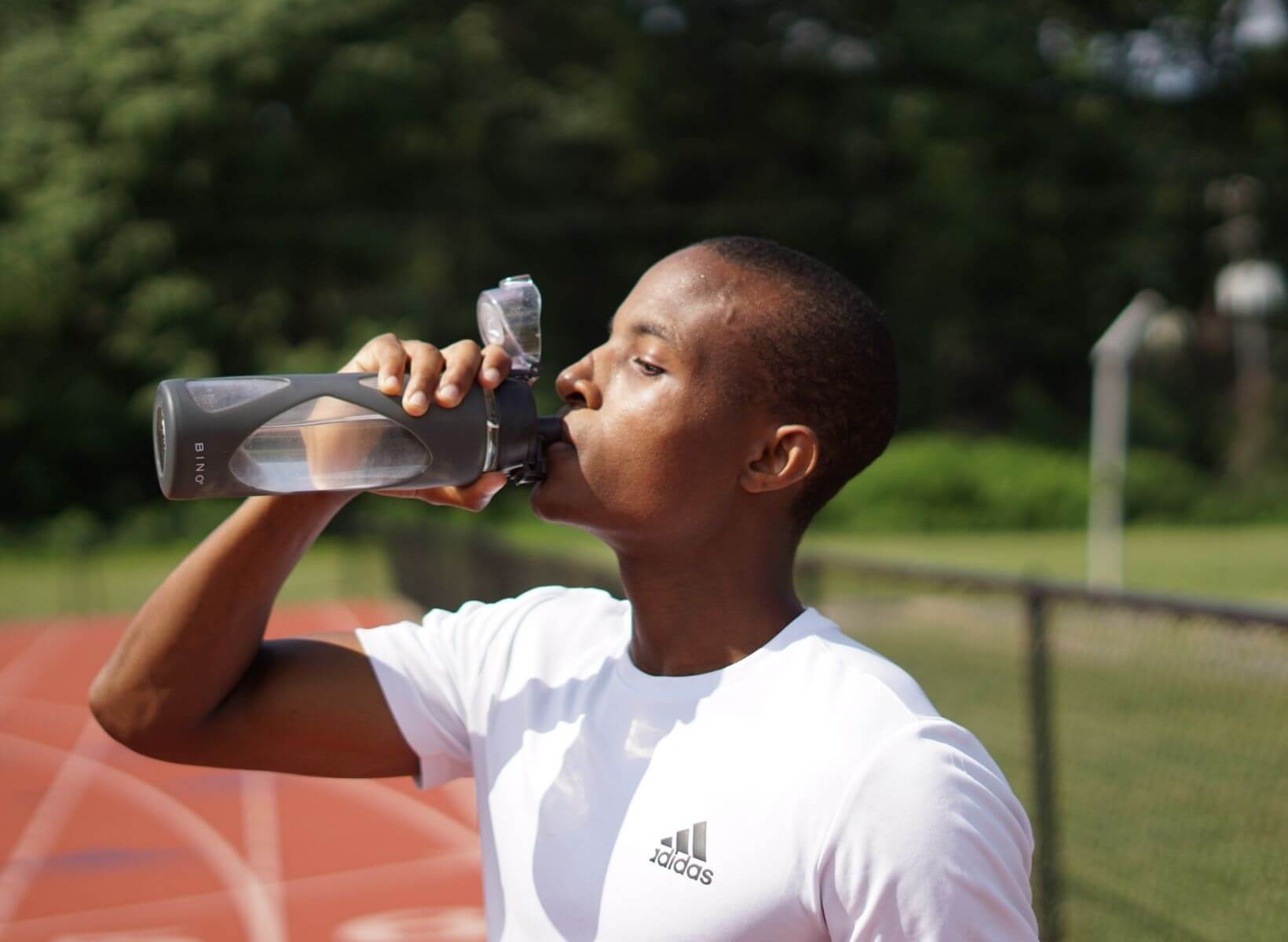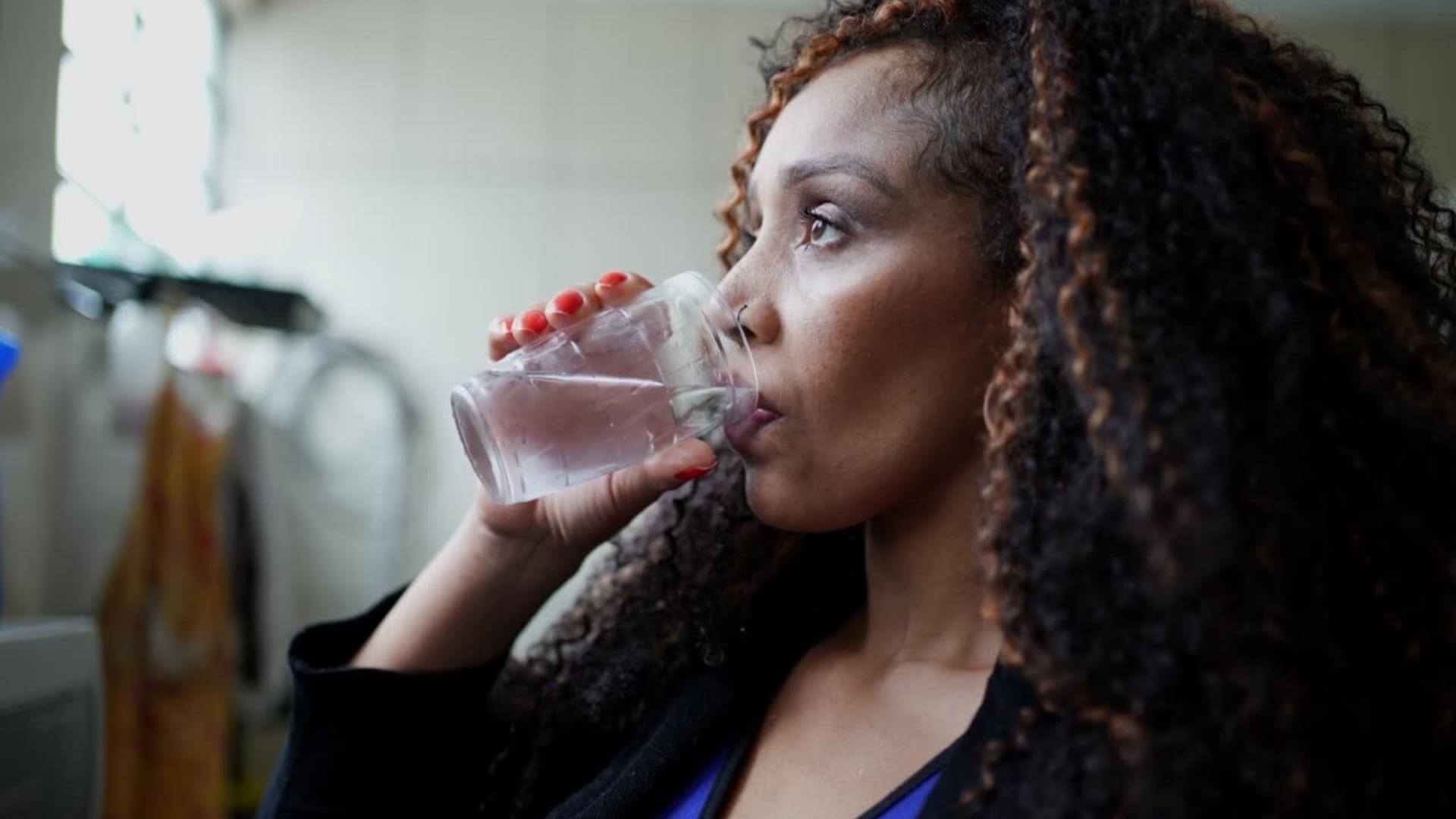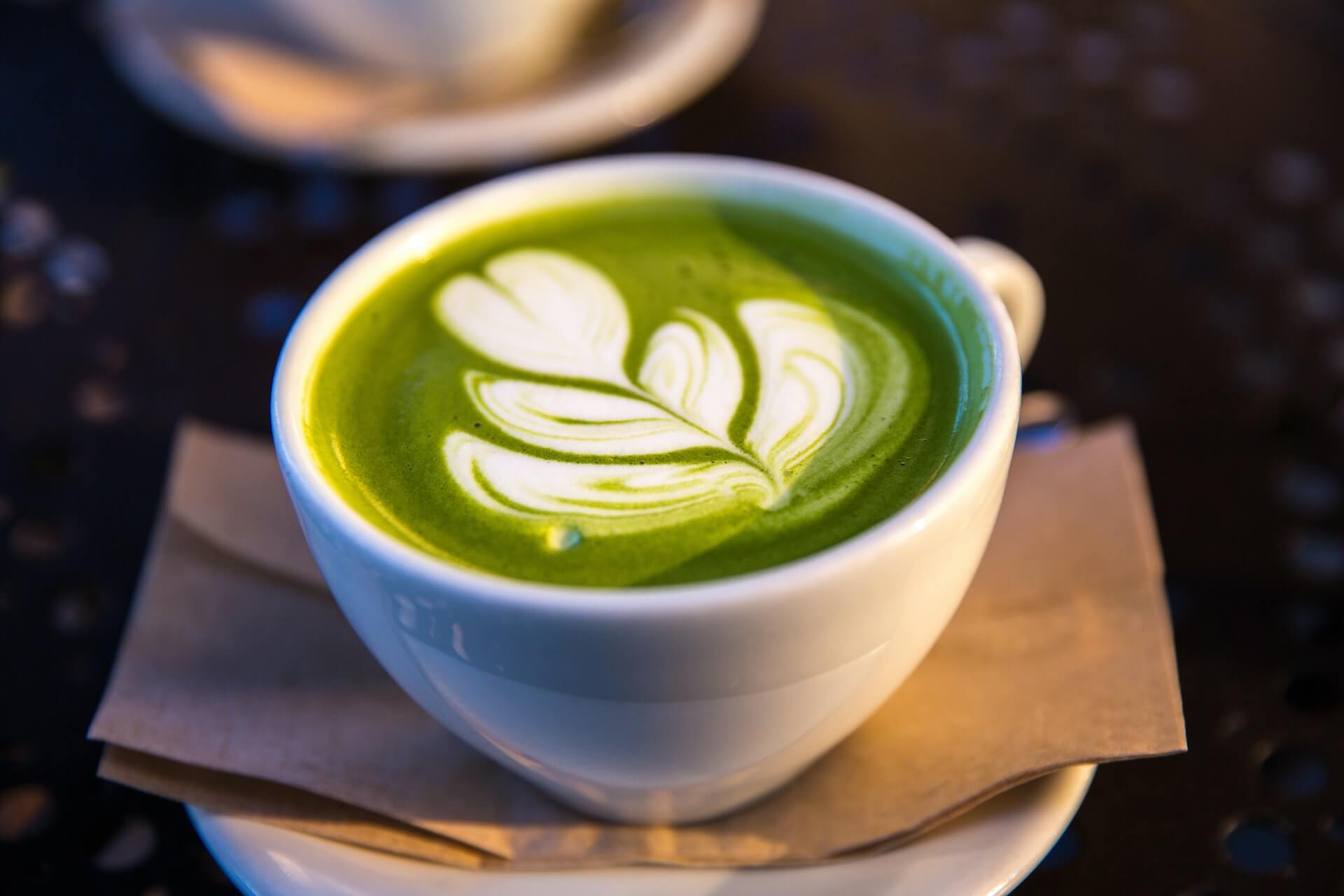Carbohydrates are not your enemy. Low- and medium-glycemic carbs from vegetables, fruits, fiber-filled whole grains, beans, and legumes provide vital nutrients that should be part of a balanced diet.
However, consuming excessive carb-heavy foods and drinks can increase blood sugar levels, and chronically elevated glucose over time may lead to metabolic syndrome, insulin resistance, and potentially type 2 diabetes.
There are many ways to prevent this, from switching to a low-glycemic diet to exercising regularly. One simple thing everyone at any age can do to lower blood sugar is to drink more water.
But does drinking water really help lower blood sugar? Let’s dive deeper to find out.
Dehydration and Blood Sugar: What’s the Link?
You may be surprised to learn that water significantly influences blood sugar levels, especially for those living with diabetes. While exercise is one of the main ways to lower blood sugar levels, especially during a glucose spike, drinking water has a similar effect because water dilutes the amount of sugar circulating in the bloodstream.
When properly hydrated, an individual’s bloodstream is balanced with the perfect amount of glucose for that individual. When you become dehydrated, glucose levels can rise as the bloodstream becomes concentrated with more glucose.
People living with diabetes often are more susceptible to dehydration and may develop serious health conditions, including diabetes mellitus. When dehydrated, people living with both type 1 and type 2 diabetes experience hyper-concentrated glucose levels, and their kidneys lose the ability to filter out excess glucose. The kidneys work overtime in the condition, and if they cannot filter out the excess sugar, this sugar is flushed out through the urine.
Chronic dehydration can also cause severe side effects, especially when the body then starts pulling fluids from other important tissues in the body, including lenses in the eye, muscle tissue, and brain tissue.
Water is a natural diuretic and will help the kidney flush out excess sugar. Since water does not contain fat, glucose, or carbohydrates, water is one of the best zero-calorie, low-carb drinks for people living with type 1 and type 2 diabetes.
{{mid-cta}}
Does Drinking Water Lower Blood Sugar: Here’s What Research Says
The quick answer is yes, drinking water may help lower blood sugar.
Water prevents dehydration and helps flush out excess sugar through your urine.
One analysis of data from 3,961 adults who participated in the National Health and Nutrition Examination Survey had their urine analyzed for any potential cross-sectional association between hydration and metabolic dysfunction. The participants with urine-specific gravity (a test that shows the concentration of all chemical particles in urine) greater than 1.013 had less favorable metabolic markers. Data analysis also showed that increasing quartiles of urine specific gravity were associated with higher fasting glucose, glycated hemoglobin, and elevated insulin.1
Another observational study showed that water intake was inversely and independently associated with high blood sugar levels.2
A study conducted on healthy Japanese men and women showed increased health benefits, such as protecting kidney function, diluting blood waste materials, and lowering blood pressure; however, drinking an additional 37 ounces (1100 mL) of water a day did not prove effective in lowering slightly elevated fasting blood glucose levels.3
Still, drinking water prevents dehydration and promotes healthy metabolism in non-diabetics.
Dehydration can elevate blood sugar levels due to a higher concentration of glucose in the bloodstream. When dehydrated, your body releases vasopressin, which tells your kidneys to retain water instead of flushing out excess glucose in urine.
One long-term study on more than 4,000 Swedish people showed that an increase in vasopressin in the blood was linked to an increase in insulin resistance and increased odds of developing type 2 diabetes.4
How Can Drinking Water Lower Blood Sugar?
Drinking water may counter high blood glucose levels by:
- Helping the kidneys flush out extra glucose through urine
- Reducing the risk of overeating
Water can act as a temporary natural appetite suppressant and may be used as a tool to thwart overeating. The average stomach volume is 2.5 ounces, but it can expand to about 33 ounces in the average adult. Drinking water fills some of that volume, leaving less space for food.
A study published in the Journal of Natural Science, Biology, and Medicine reported what happened to a group of overweight women who drank large quantities of water for eight consecutive weeks. The results showed that drinking water contributed to a decrease in body weight (weight loss) and an increase in appetite suppression.6
Be careful to watch what you eat, though: If you drink enough water to suppress your appetite but your meal consists of a tray of pastries, your blood sugar will spike regardless.
Two of the symptoms of high blood sugar are increased thirst and dryness of the mouth. This is the body’s counteractive mechanism urging you to drink water to clear out excess glucose and recalibrate blood glucose concentrations.
So, by increasing your water consumption, you’ll feel the need to urinate frequently. This can excrete excess sugars from your blood and decrease your glucose levels.
How Much Water Should You Drink For Healthy Glucose Levels?
Before chugging all of the water, learn how much water you might need to drink each day.
The Institute of Medicine of the National Academies (from their 2022 report) recommends the following daily average intake of water:
- 2.7 liters (91 ounces) a day of total water for women ages 19-70+
- 3.0 liters (101 ounces) a day of total water for pregnant women ages 14-50
- 3.8 liters (128 ounces) a day of total water for lactating women ages 14-50
- 3.7 liters (125 ounces) a day of total water for men ages 19-70+
Active people will likely require additional water or fluids to meet their training needs. The recommendations above include average daily amounts of total liquid intake (from all beverages, water, and water-containing foods) under normal conditions that don’t account for extreme heat and humidity, so you may need to adjust based on the conditions that day.
While it’s important to drink enough water, it’s possible to drink too much water daily. Excessive water consumption could cause water intoxication, a rare condition that can occur when water intake exceeds excretion in the kidney. This could lead to a more serious condition called hyponatremia, which happens when the level of sodium in the blood is too low, and the body holds onto too much water. Hyponatremia needs to be treated by a doctor.
Use the guidelines above to estimate the amount of water you drink daily, adjusting for your activity level and the conditions.
Tips for a Less Sugary (or Sugar-Free) Life
Once the food you eat is broken down into glucose, insulin is released by your pancreas to help transfer the glucose into your cells which can then be used for energy. Some foods are broken down quickly, while others can take a few hours to be digested and absorbed.
Foods broken down quickly tend to be high in glucose (sugar). Eating them alone or in large amounts may raise your blood sugar quickly, causing a rapid spike and quick drop. While you may get a quick burst of energy, the resulting drop in blood sugar can make you feel tired and worn out.
People with diabetes, pre-diabetes, or who are insulin resistant may experience a rapid rise and drop in blood sugar after eating some foods, including those high in glucose. Drinking water before, during, and after meals can reduce and decrease these glucose spikes. Below are some other actionable ideas to decrease the sugar in your meals.
Reduce white carbs
Grains provide many essential vitamins and minerals and are an important part of a balanced diet. However, refined grains that have the fiber stripped away are digested and absorbed quickly.
The Dietary Guidelines for Americans recommend making sure half your grains come from whole grain sources like 100% whole grain bread, brown rice, barley, and oatmeal.11
It’s okay to enjoy some refined grains; just make sure you pair them with foods that slow down their absorption, like protein and fat, and have a small portion.
Escape added and refined sugars
Added sugars are sugars that are added during food processing. This is very different from natural sugars. Natural sugars, like lactose in milk or fructose in fruit, are fine, but too many added sugars may cause a spike in blood sugar.
Sugars are often added to food for flavor and sweetness, but they also help with the browning and texture of baked goods. Sometimes, they can help make nutrient-dense foods more enjoyable.
When enjoyed in small amounts, sweet foods can help improve our diets by making nutrient-dense ones more enticing and enjoyable.11 However, most Americans consume more than they need, increasing their calorie intake and may cause some people to experience blood sugar spikes.
While sweetened beverages and baked goods are the most frequently consumed sources of added sugars, you may also find them in unexpected places like breakfast bars, condiments, sauces, and yogurt.
Added sugars are now listed on nutrition labels, making it easier to see what you eat. Compare labels and choose those that are lower in added sugars. Aim for no more than a few grams per serving.
Increase protein consumption
Like fat, protein-rich foods take a few hours to be broken down into glucose and absorbed into your bloodstream. They also contain essential nutrients like amino acids, vitamin B12, iron, and healthy fats.
Choosing lean proteins in place of those that are higher in saturated fats, like fatty red meat, cheese, and lunchmeats, may help improve insulin sensitivity as well as reduce the risk of cardiovascular disease.12
Seafood, especially fatty fish like salmon, trout, and sardines, are high in omega-3 fatty acids, which have been shown to reduce the risk of cardiovascular disease, cancer, and other metabolic diseases.
Beans and dried peas are high in protein and rich in fiber, which helps slow digestion.
Soy-based products are rich in phytoestrogens that have been shown to reduce the risk of cardiovascular disease and may help improve fasting blood glucose levels, although more research is needed to fully understand its effects on blood glucose.13
Indulge in healthy fats
Just like carbs, not all fats are created equal. While it is recommended that most people reduce their fat intake, that doesn’t mean cutting it out altogether. Some fat is actually good for us! It helps absorb other nutrients like antioxidants and vitamins and provides essential nutrients like vitamin E and antioxidants.
Fat also takes a few hours to be broken down into glucose and absorbed. So adding some fat to your meals and snacks may help keep your blood sugar from spiking.
Be mindful about caffeinated drinks
Some studies suggest that caffeine impairs blood glucose management, although other research indicates that some caffeine is okay.
In a study conducted on 10 healthy men, it was observed that caffeinated coffee raised blood sugar levels whether the test subjects ate a high or low glycemic index (GI) meal.8 However, when these same individuals drank decaffeinated coffee, their blood sugar levels did not change as much.
The takeaway: caffeine affects everyone differently. If you hope to lower your blood sugar levels, limiting caffeine intake may be a good idea.
Avoid sodas, fruit juices, sweetened drinks
Sugary drinks like soda, energy drinks, sports drinks, sweetened tea, and fancy coffee drinks tend to be full of calories, fat, and sugar. The majority have minimal nutritious ingredients in them. Opting for water, green tea, or plain coffee is best. You can jazz up your drinks by adding fruit to your water, sprinkling nutmeg, cinnamon, or cardamon in your coffee grounds before brewing, and a sprig of mint to your tea.
Tips on How to Drink More Water
If you don’t like the taste of plain water, there are several easy hacks you can try to increase your fluid intake, such as:
- Sip carbonated or sparkling water instead of plain. Many naturally flavored sparkling waters provide a bit of fruity flavor without added sugar or artificial sweeteners.
- Add sliced fruit to your water, such as lemons, limes, cucumbers, or strawberries.
- When fresh mint is available, infuse water with the leaves and stems for a hint of mint refreshment.
- Cinnamon and powdered probiotics may also help with glucose regulation. Make a mug of herbal or black tea, drop in a cinnamon stick, or whisk powdered probiotics into any tea or coffee drink.9,10
- Tea and coffee count toward your total daily water intake. Just monitor your caffeine intake, as some people can experience increased blood sugar from caffeine.
- Fruits and vegetables also contain water, which also counts toward your total daily intake. Try low-glycemic produce such as celery, lettuce, cucumbers, watercress, zucchini, strawberries, tomatoes, bell peppers, cauliflower, and cabbage.
- Try drinking more water before, during, and after meals and adding more water-packed fruits and veggies to your diet.
Infusing your water is an excellent way to increase your water consumption, especially if you are avoiding plain water due to its taste. Below is one of our favorite recipes to try out!
Citrus Mint Flavored Water
Ingredients:
1 lemon
1 qt water
10 mint leaves
Directions:
- Wash and slice lemons into thin rings. Break the mint leaves into small pieces. Place ingredients into a water pitcher or individual cups.
- Fill the vessel with ice and water and let the water soak up the flavor of the citrus and mint for at least 10 minutes.
Additional Tips to Manage and Lower Your Blood Sugar Levels
The Centers for Disease Control and Prevent (CDC) report that 13% of American adults live with diabetes, and 34.5% of American adults have prediabetes.21 Blood sugar management is important for everyone, especially those focusing on diabetes care, as high blood sugar levels can lead to severe health complications.
Besides drinking water, below are some easy ways to naturally lower blood sugar levels.
Exercise regularly
Exercise can be an integral part of managing blood glucose levels. It can help lower your blood sugar, support weight management, reduce the risk of heart disease, and boost overall wellness. Still, even with these health benefits, you must take measures to work out safely if you live with diabetes.
It’s important to track your blood glucose levels before, during, and after exercising (unless directed otherwise by your doctor) to understand how your body responds to physical activity and avoid potentially dangerous blood sugar fluctuations.
General guidelines suggest a blood sugar that falls between 100 and 250 mg/dL is safe for most people before starting their workout. Anything outside of those ranges indicates a need for adjustment.
Focus on stress management
Psychological stressors raise glucose, and one study found a significant positive correlation between anxiety and glucose.14 In another study, researchers analyzed data from 2,433 participants in the Netherlands Study of Depression and Anxiety and found a strong association between most metabolic syndrome components and anxiety.15
The good news: Signos members have seen positive effects on glucose from deep breathing and meditation. Practice deep belly breathing, 4-7-8 breathing, progressive muscle relaxation, meditation, tai chi, gentle yoga, or guided imagery to reduce anxiety and stress.
Get quality sleep
Long-term effects of sleep disruption in healthy adults include weight-related issues, metabolic syndrome, type 2 diabetes, and cardiovascular disease, according to one research review.16 A different review of scientific research showed an association between decreased self-reported sleep duration and an increased incidence of type 2 diabetes, obesity, and cardiovascular disease and that sleep disruption has detrimental effects on metabolic health.17
If you have trouble falling, staying, or not getting enough sleep, try to align your circadian rhythm with natural sunlight. Just like kids, adults need a wind-down period before bed. Stray from blue lights and do calming activities like reading a book, meditating, or sipping herbal tea in a warm bath to relax. Make your sleep environment conducive to restful sleep—adjust the room temperature to be cool (65 degrees is ideal), use darkening shades or a sleep mask, and turn on a white noise machine.
Maintain your weight
Maintaining a healthy weight reduces an individual’s chance of developing diabetes and can improve blood sugar levels. Research has shown that a 5% reduction in body weight can improve blood sugar regulation and reduce the need for diabetes medication like metformin.18
Eat more frequently
While meal planning can take time, spreading meals throughout the day can dramatically decrease blood sugar spikes and swings.19 Snacking between meals also may reduce the risk of type 2 diabetes.20
- Item 1
- Item 2
- item 3
Topics discussed in this article:
References
- https://pubmed.ncbi.nlm.nih.gov/34003332/
- https://pubmed.ncbi.nlm.nih.gov/21994426/
- https://www.mdpi.com/2072-6643/12/4/1191
- https://pubmed.ncbi.nlm.nih.gov/20439785/
- https://www.nal.usda.gov/sites/default/files/fnic_uploads/water_full_report.pdf
- https://www.ncbi.nlm.nih.gov/pmc/articles/PMC4121911/
- https://pubmed.ncbi.nlm.nih.gov/32451415/
- https://pubmed.ncbi.nlm.nih.gov/18469247/
- https://link.springer.com/article/10.1186/1550-2783-3-2-45
- https://journals.plos.org/plosone/article?id=10.1371/journal.pone.0132121
- The Dietary Guidelines for Americans, 2020-2025. Accessed October 19, 2022. https://www.dietaryguidelines.gov/sites/default/files/2020-12/Dietary_Guidelines_for_Americans_2020-2025.pdf
- von Frankenberg, A. D., Marina, A., Song, X., Callahan, H. S., Kratz, M., & Utzschneider, K. M. (2017). A high-fat, high-saturated fat diet decreases insulin sensitivity without changing intra-abdominal fat in weight-stable overweight and obese adults. European journal of nutrition, 56(1), 431–443. https://doi.org/10.1007/s00394-015-1108-6
- Glisic, M., Kastrati, N., Gonzalez-Jaramillo, V., Bramer, W. M., Ahmadizar, F., Chowdhury, R., Danser, A. J., Roks, A. J., Voortman, T., Franco, O. H., & Muka, T. (2018). Associations between Phytoestrogens, Glucose Homeostasis, and Risk of Diabetes in Women: A Systematic Review and Meta-Analysis. Advances in nutrition (Bethesda, Md.), 9(6), 726–740. https://doi.org/10.1093/advances/nmy048
- https://www.sciencedirect.com/science/article/
- https://journals.lww.com/psychosomaticmedicine/Abstract/
- https://www.ncbi.nlm.nih.gov/pmc/articles/PMC5449130/
- https://www.ncbi.nlm.nih.gov/pmc/articles/PMC4370346/
- https://pubmed.ncbi.nlm.nih.gov/34749892/
- https://www.ncbi.nlm.nih.gov/pmc/articles/PMC6207475/
- https://pubmed.ncbi.nlm.nih.gov/34420544/
- https://www.cdc.gov/diabetes/pdfs/data/statistics/national-diabetes-statistics-report.pdf
































